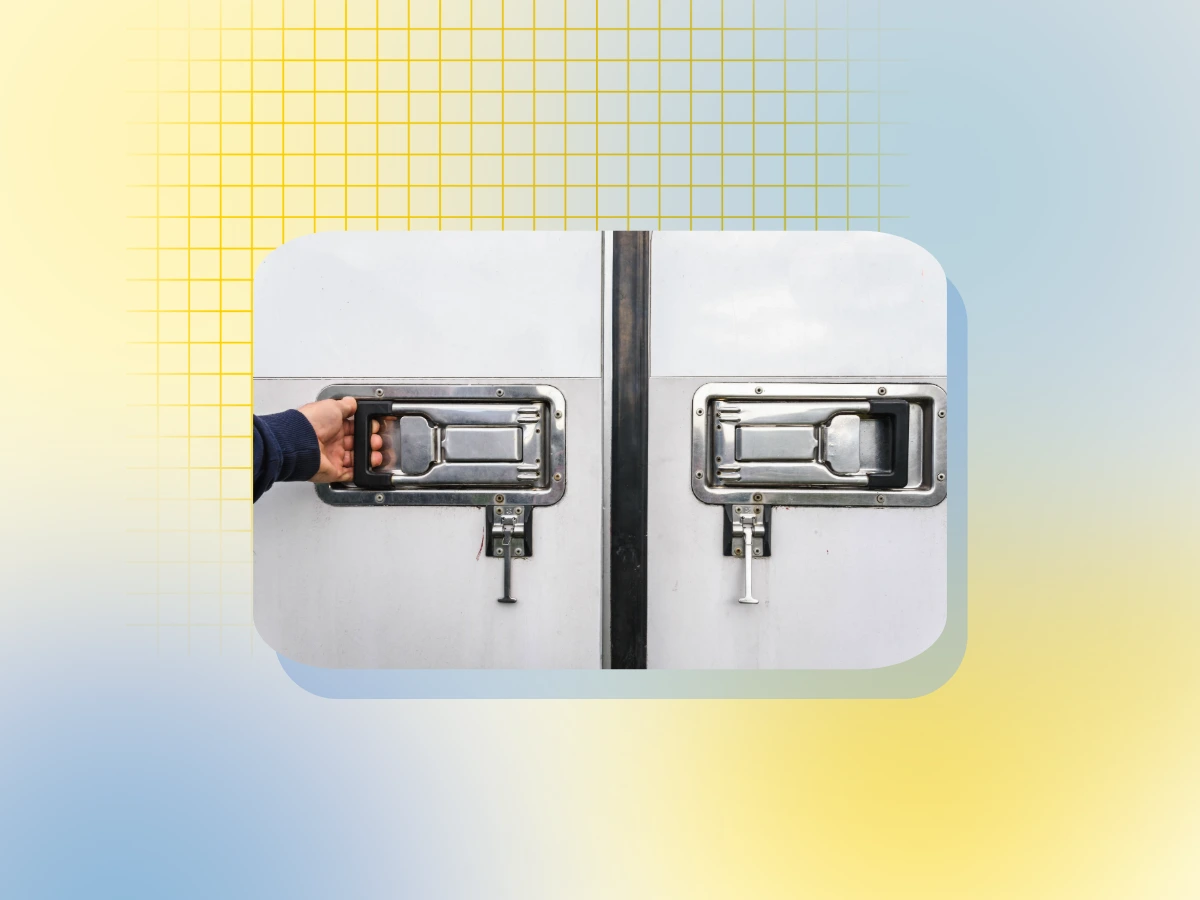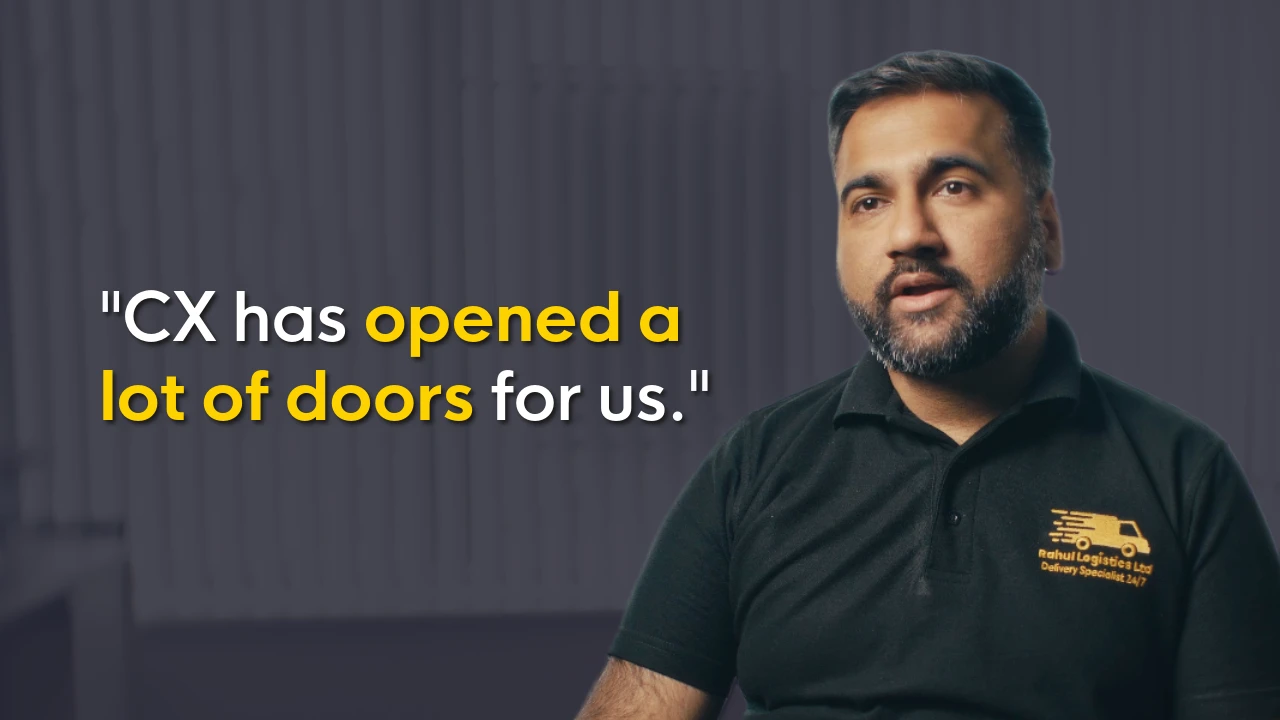The logistics industry is constantly evolving, and if you want to stand out, offering frozen transport and chilled transport could be the way forward.
As an owner-driver or small courier business owner, expanding into temperature-sensitive deliveries presents an opportunity to grow your business. Not only does it allow you to tap into a high-demand market, but it can also increase your earnings as a courier.
In this article, we’ll explain how to break into this niche, the equipment and certifications you’ll need, and why specialising in frozen and chilled transport could help your business thrive.
What we’ll cover
Get access to 15,000+ courier loads a day on Courier Exchange
Be your own boss. Set your own hours. Make your own money.
What is frozen and chilled transport?
Before you can offer chilled transport services, it’s important to understand what it involves.
Chilled transport refers to the transportation of goods that need to be kept at a low but non-freezing temperature, typically between 0°C and 5°C. This is common for products like fresh produce, dairy, and pharmaceuticals.
On the other hand, frozen transport means keeping goods at temperatures below 0°C, which is essential for transporting frozen food, ice cream, and certain medical supplies.
Both forms of transport require careful handling and appropriate temperature control to maintain the quality and safety of the goods.
Frozen, refrigerated and chilled transport are often grouped together, but the specifics vary depending on the temperature requirements of the items you’re transporting.
Why specialise in temperature-controlled transport?
Specialising in frozen and chilled transport can be a lucrative move for couriers looking to grow their courier businesses. Here’s why:
1. There’s a growing demand for temperature-sensitive deliveries
As the demand for fresh, frozen, and temperature-sensitive goods increases, so does the need for reliable specialist courier services. Whether it’s food, medicine, or scientific samples, temperature-controlled delivery services are more important than ever.
Consumers want fresh products delivered quickly, and businesses are willing to pay a premium for services that guarantee their goods arrive safely at the right temperature. By offering frozen, refrigerated and chilled transport, you position yourself as a trusted provider for these high-value courier jobs.
2. You’ll earn more
Specialising in chilled transport allows you to charge higher rates for courier loads due to the specialised nature of the service, especially on Courier Exchange.
The cost of equipment and the added responsibility of keeping goods at a specific temperature means you can command a premium over standard delivery services. As more businesses require specialist services, your niche will become even more profitable.
3. You’ll get a competitive edge
In an industry that’s becoming increasingly competitive, having a niche can help you stand out.
Whether you’re offering frozen transport or chilled transport, specialising in temperature-controlled deliveries sets you apart from general couriers. It shows you have the skills, equipment, and knowledge to handle delicate goods with care, which will appeal to potential clients.

How to upgrade your van for chilled transport
Upgrading your van to handle chilled transport can be a significant investment, but it’s necessary if you want to offer these services. There are a few ways to go about this:
Add insulation
Insulating your van is one of the first steps when adapting it for chilled transport. Proper insulation helps maintain a consistent temperature inside the vehicle, which is crucial when transporting goods that need to be kept cool or frozen.
You can either install insulation panels inside the van or opt for custom-made refrigerated units. Insulation helps prevent external temperature changes from affecting the contents of your van, ensuring goods stay within the required temperature range.
Install a refrigerated unit
The next step is installing a refrigerated unit, which actively cools the air inside the van to maintain the desired temperature.
Depending on your needs, you can choose from different types of refrigeration systems:
- Direct refrigeration systems: These are designed to keep the air inside the van cold, ensuring the right temperature is maintained. They are ideal for refrigerated and chilled transport.
- Transit refrigeration units: These are often used for frozen transport and can handle lower temperatures for extended periods. They may be a larger investment but are more suitable for long-distance hauls.
Whichever system you choose, make sure it can maintain a consistent temperature throughout the journey. Many systems allow you to monitor the temperature remotely, providing added security and peace of mind.

Specialist vehicles for temperature-controlled transport
For those who are willing to invest further, you might want to consider purchasing a specialist refrigerated vehicle.
These vehicles come with built-in cooling units that are specifically designed for transporting frozen and chilled goods.
Benefits of owning a refrigerated vehicle
Owning a dedicated refrigerated vehicle allows you to handle frozen transport with ease. These vehicles are typically more efficient at maintaining low temperatures over long distances. They also come equipped with advanced temperature monitoring systems, which makes it easier to stay compliant with regulations.
While upgrading your existing van can be a more cost-effective option initially, a purpose-built refrigerated vehicle provides greater flexibility and reliability. It’s a long-term investment that will help your business grow, especially if you’re focused on high-value courier jobs that require consistent, reliable service.
Buying vs upgrading
When deciding between upgrading your van or purchasing a specialist vehicle, consider factors like the volume of chilled transport you plan to do, your budget, and your long-term business goals. If you’re just starting out and you expect occasional temperature-controlled jobs, upgrading your van might be enough.
However, if you anticipate more frequent deliveries or plan to specialise heavily in refrigerated and chilled transport, buying a dedicated courier van designed for temperature-controlled transport could be more cost-effective in the long run.
Certifications and regulations
Transporting temperature-sensitive goods isn’t just about having the right equipment; you’ll also need to meet certain legal and regulatory requirements.
Here are some things you need to be aware of:
Food safety and hygiene regulations
If you plan to transport food, you’ll need to adhere to strict food safety regulations, including compliance with the HACCP (Hazard Analysis and Critical Control Point) system. This involves keeping track of the temperature of your goods during transportation and ensuring they are handled in a hygienic manner.
In addition to food safety certifications, you may need specific training in food handling and transportation. For example, you might need a food hygiene certificate, which demonstrates your ability to manage temperature-controlled deliveries safely.
ADR for couriers
If you’re handling goods classified as dangerous or hazardous (such as certain chemicals or medicines), you may need to obtain ADR certification as a courier.
This certification ensures that you are trained to transport hazardous materials safely, particularly when they require temperature control.
Keeping records
Part of the regulatory process includes maintaining accurate records of temperature readings during transport.
This is especially important for businesses transporting pharmaceuticals, medical supplies, or food products. You’ll need to be able to demonstrate that your delivery met the required standards.
Conclusion
Offering frozen transport and chilled transport opens up a world of possibilities for new courier businesses. Specialising in temperature-controlled services can help you access high-demand markets, charge premium rates, and stand out from the competition. By upgrading your van, investing in specialised vehicles, and obtaining the right certifications, you’ll be well on your way to offering reliable and safe courier services.
As you grow, you’ll find that these types of services can be both rewarding and profitable. If you’re looking for owner-driver jobs or want to build your reputation in a niche market, frozen transport could be just the opportunity you need.
Get access to 15,000+ daily loads on Courier Exchange
Be your own boss. Set your own hours. Make your own money.
Frequently Asked Questions
What’s the difference between frozen and chilled transport?
Frozen transport involves keeping goods at temperatures below 0°C, while chilled transport is for items that need to be kept at temperatures between 0°C and 5°C. Both require specialised equipment to maintain the right conditions.
Do I need special training for frozen transport?
Yes, you’ll need to undergo training in food safety, hygiene, and possibly hazardous materials handling if you plan to transport dangerous goods. Certifications like HACCP or ADR for couriers may be required.
How do I equip my van for refrigerated transport?
Upgrading your van involves installing insulation and a refrigerated unit. You can either retrofit your current vehicle or invest in a dedicated refrigerated vehicle for better efficiency.
What certifications do I need for transporting chilled goods?
You’ll need certifications in food safety, such as HACCP, and possibly ADR for couriers if you’re transporting hazardous materials. You must also keep temperature logs for compliance.
Is it worth investing in a specialist refrigerated vehicle for my courier business?
If you plan to specialise in frozen transport or chilled transport for high-value deliveries, investing in a specialised vehicle can provide more reliability, flexibility, and long-term benefits for your business.




